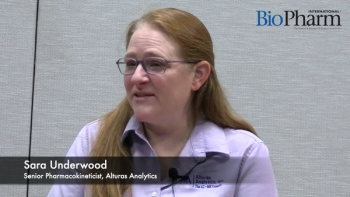
Patient-Driven Innovation and an Investigational tRNA-based Gene Therapy
Tevard Biosciences CEO Daniel Fischer discusses tackling Dravet syndrome with a scalable, mutation-targeted approach and building a mission-led company culture.
As part of our 2025
Tevard’s name reflects its core mission: reversing Dravet. From the outset, Fischer approached the disease with an engineer’s mindset, seeking a precise, scalable solution to a genetically complex disorder. Dravet is caused by de novo mutations in the SCN1A gene, which is too large for traditional adeno-associated virus (AAV)-based gene therapy delivery. Moreover, overexpression of SCN1A can be harmful, and the wide variability of mutations complicates gene editing strategies.
Faced with these challenges, Tevard turned to tRNA-based suppression of premature
Fischer emphasized that building a mission-driven culture around patient centricity has been key to the company’s evolution. “Scientists many times are working with cell lines, with mice... they lose a perspective that the work that they're doing is actually to cure a patient, it's not to cure mice,” he said.
Check out
Transcript
*Editor’s Note: This transcript is a direct, unedited rendering of the original audio/video content. It may contain errors, informal language, or omissions as spoken in the original recording.
I am Daniel Fischer. I'm the co-founder and CEO of Tevard Biosciences. I'm an electrical engineer with an MBA. I have a track record, I had a track record, in management consultant and as an entrepreneur. I started Tevard Biosciences with, MIT and Whitehead Institute professor Harvey Lodish and also with Warren Lambert.
Warren and I have daughters with Dravet Syndrome. Dravet is a very severe type of genetic epilepsy, and, the goal of starting Tevard was to reverse Dravet. That's where the name Tevard comes from: reversing Dravet.
Yes, when, when we set out to treat. or more boldly, cure Dravet, we were looking for a solution that would address our problem. I tackled the problem as an engineer. So I had a problem, I need a solution. Dravet, like many other diseases, are caused by mutations in a gene. In the case of Dravet, it's SCN1A, which is a large gene.
So you can't deliver the SCN1A gene or the coding region of the gene using AV vectors or LMP or other methods. Also, Dravet, over-expressing Dravet is deleterious. So we needed a method also that would give us a very precise expression of the gene. And, third, Dravet is caused by de novo mutations.
So, there are hundreds of different mutations that have been identified. So, using traditional methods like gene editing or base editing was impractical. So, with that in mind, we came with idea of using tRNAs to target a very specific type of mutation. Mutations which end up being premature stop codons that cause 25% of all cases of Dravet.
And in general, within genetic diseases, premature stop codons cause between 10 and 20% of all cases of the disease. So by using tRNAs, we can actually target diseases which are not amenable to traditional methods of gene therapy. And tRNAs, and the, our, our leading platform, which is the suppressor tRNA, have an added advantage since we're targeting a common type of mutation, nonsense mutation. The same mutation that causes Dravet is a mutation that causes Duchenne muscular dystrophy or the same mutation that causes dilated cardiomyopathy caused by mutations in Titin. So we could actually use the same construct, the same gene therapy ,to treat multiple diseases, which is very uncommon for a gene therapy product.
And that would give us the ability to be more efficient in our development process, in our clinical trial process. And that way we can actually get our treatments to more patients, to more diseases as possible.
Yeah, so, when you're an early stage buyer, you, you face the typical challenges that every company faces, which is dealing and juggling many balls at the same time. You have to deal with licensing the technology. You have to deal with AP, you have to deal with employment aspects, finding a space.
And then of course development, developing the science and funding the company. For me, since the beginning, I think one of the aspects that are more challenging as a company grows and progresses is building a culture and building a team. And what's critical for me is to define the purpose, the mission of the company early on. And I think then the culture and the team evolves around that, and you can grow it and evolve it as a company grows and as you face an ever-changing and challenging environment.
So for me, what's worked, I think injecting my, my personal perspective, so as I said, I think one of the, the key aspects that you have to have in mind when you start a company is, why am I starting this company? What's the mission? What's the purpose of my, the company? And I think everybody has different reasons.
Everything, different purposes, and I think each one of them is fine, but you have to be clear on what it is, and you have to clearly communicate it. In my case, of course, I started with a purpose of help curing my daughter and many other kids with Dravet disease and with other diseases as well.
So, as I started the company and I build the culture, the culture gets built around the purpose of patients centricity, of curing the patient. Scientists many times are working with cell lines, with mice, and many times they, they lose a perspective that the work that they're doing is actually to cure a patient, it's not to cure mice. So just keeping that, the purpose top of mind, constantly culture building the core team that is gonna be with you as a company grows, hiring the right people. For me, that's the key to growing a successful company.
Newsletter
Stay at the forefront of biopharmaceutical innovation—subscribe to BioPharm International for expert insights on drug development, manufacturing, compliance, and more.



